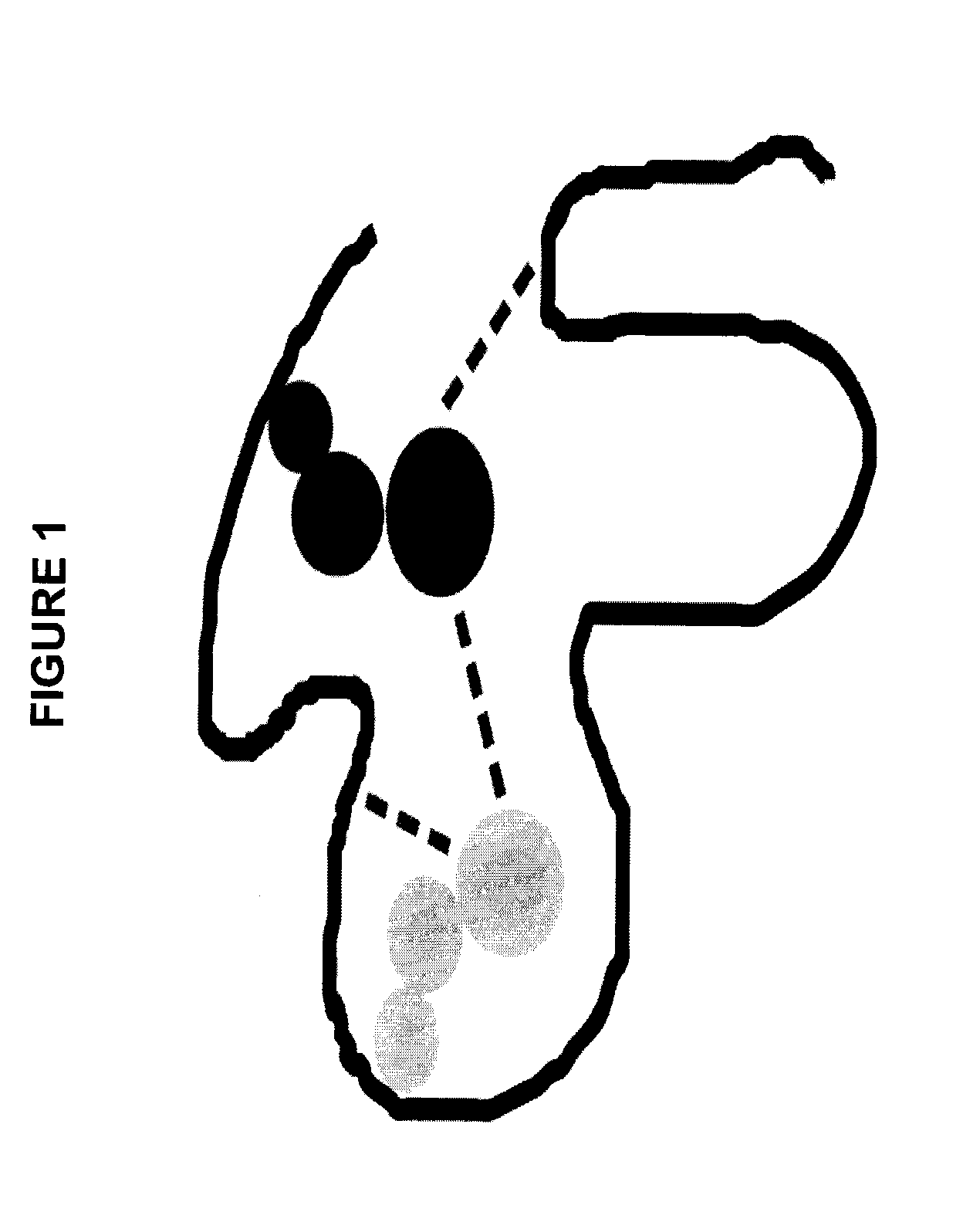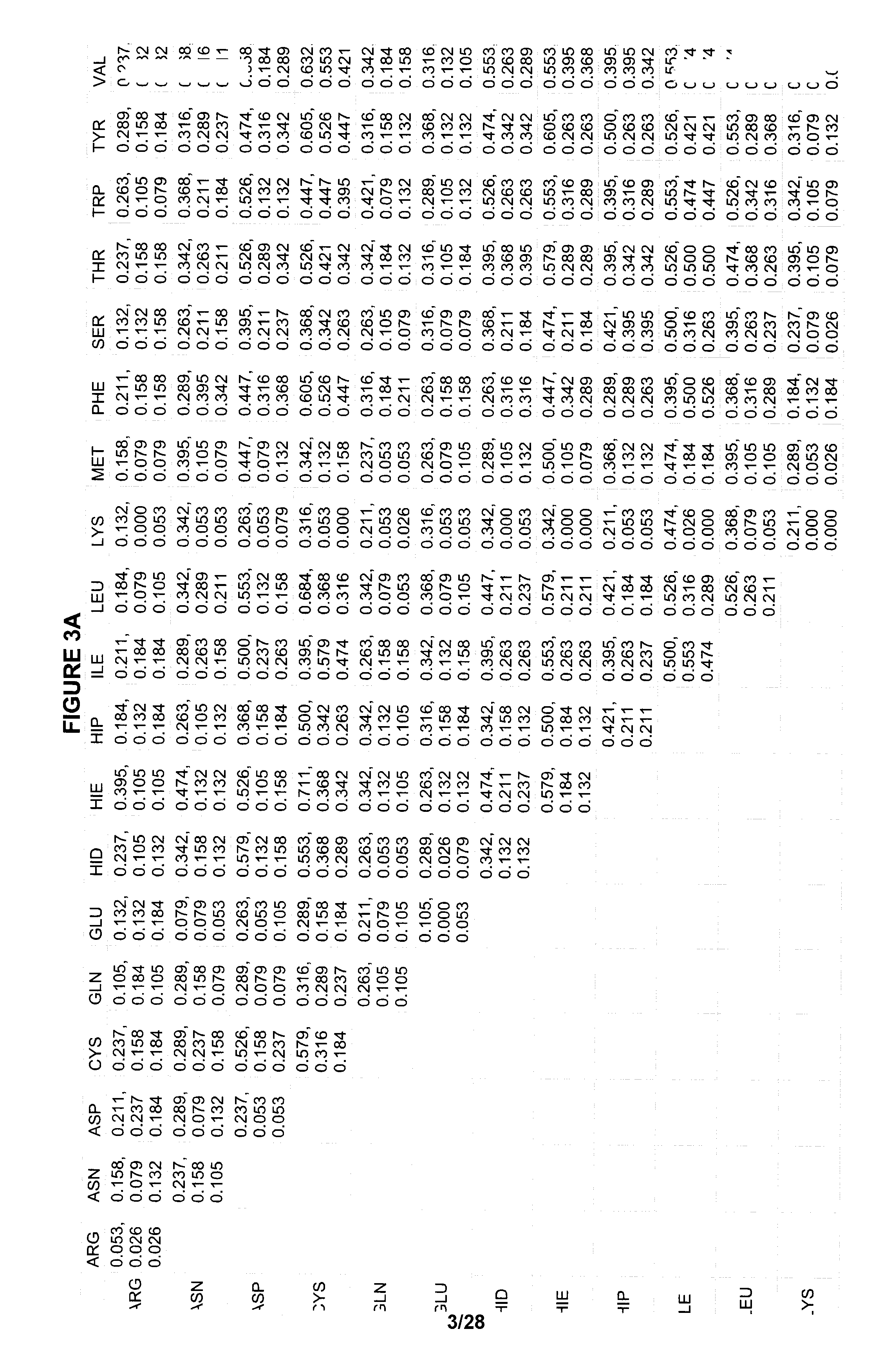Simplifying residue relationships in protein design
a technology of residue relationships and protein design, applied in the field of computational protein structure study and design, can solve the problems of loss of accuracy, small reduction of accuracy, and significant gain in computational speed
- Summary
- Abstract
- Description
- Claims
- Application Information
AI Technical Summary
Benefits of technology
Problems solved by technology
Method used
Image
Examples
example 1
[0078]In proof of concept studies outlined below, human IGG1 Fc fragment-Fc-gamma receptor III complex (PDB Accession Record 1E4K) was used as a representative protein system. The wild-type structure has been described in Sondermann et al., Nature, 2000, 406: 267. Pairs selected from among positions A / 235, A / 236, A / 237, A / 239, A / 266, A / 267, A / 325, A / 327, and A / 328 were considered. The standard AMBER force field was used to optimize rotamer side chains in this example, where it was used in a FastPair calculation, and in the following examples, where it was used in both FastPair and traditional packing methods. For background on AMBER, see J. W. Ponder, D. A. Case “Force fields for protein simulations,”Adv. Prot. Chem. 2003 Dec. 15, 66: 27-85. The values of Shannon's entropy and clash count for three different side-chain friction regimes, namely, the zero limit, mixed and infinite limit are shown in Tables 1-3 of FIG. 7. Close contacts values are provided as averages. For example, the...
example 2
Accuracy of Rotamer Selection on a Per Site Basis
[0079]In this example, the ability of the FastPair method to correctly identify the optimal rotamer for a site / mutation combination was verified. The example considers full amino acid scans at 38 distinct site pairs of the system described in the previous example. The 38 pairs included:
B237 B328 GLY LEUB239 B265 SER ASPB240 B263 VAL VALB240 B328 VAL LEUB240 B332 VAL ILEB241 B262 PHE VALB242 B323 LEU VALB242 B334 LEU LYSB262 B303 VAL VALB263 B302 VAL VALB263 B328 VAL LEUB263 B332 VAL ILEB266 B293 VAL GLUB266 B323 VAL VALB267 B269 SER GLUB267 B270 SER ASPB270 B325 ASP ASNB270 B327 ASP ALAB274 B322 LYS LYSB275 B304 PHE SERB276 B278 ASN TYRB276 B285 ASN HIDB276 B322 ASN LYSB278 B320 TYR LYSB278 B322 TYR LYSB278 B333 TYR GLUB278 B335 TYR THRB284 B322 VAL LYSB284 B324 VAL SERB285 B324 HID SERB293 B295 GLU GLNB293 B302 GLU VALB295 B300 GLN TYRB300 B302 TYR VALB320 B322 LYS LYSB323 B334 VAL LYSB325 B327 ASN ALAB333 B335 GLU THR
where, for exam...
example 3
Accuracy of Joint Rotamer Configuration
[0083]Having demonstrated the utility of the FastPair method in predicting the optimal rotamer for residues involved in pair mutations when treated individually, we now consider the method's performance in correctly predicting the joint configuration for both residues involved in a pair mutation. Specifically, in the results below, the FastPair method was deemed successful when the predicted rotamers for both residues involved in a pair mutation were simultaneously within a 0.25 Å heavy atom root-mean square deviation of the respective rotamers selected by traditional packing. Other similar thresholds may be suitable for determining successful prediction. The reference data were produced by performing traditional packing over complete residue sweeps at the 38 distinct site pairs described above, yielding a total of 13718 pair mutations (38×19×19).
[0084]In the table in FIG. 3, the accuracy of FastPair in selecting optimal rotamers is evaluated o...
PUM
| Property | Measurement | Unit |
|---|---|---|
| degrees of freedom | aaaaa | aaaaa |
| structure | aaaaa | aaaaa |
| free energy of stability | aaaaa | aaaaa |
Abstract
Description
Claims
Application Information
 Login to View More
Login to View More - R&D
- Intellectual Property
- Life Sciences
- Materials
- Tech Scout
- Unparalleled Data Quality
- Higher Quality Content
- 60% Fewer Hallucinations
Browse by: Latest US Patents, China's latest patents, Technical Efficacy Thesaurus, Application Domain, Technology Topic, Popular Technical Reports.
© 2025 PatSnap. All rights reserved.Legal|Privacy policy|Modern Slavery Act Transparency Statement|Sitemap|About US| Contact US: help@patsnap.com



